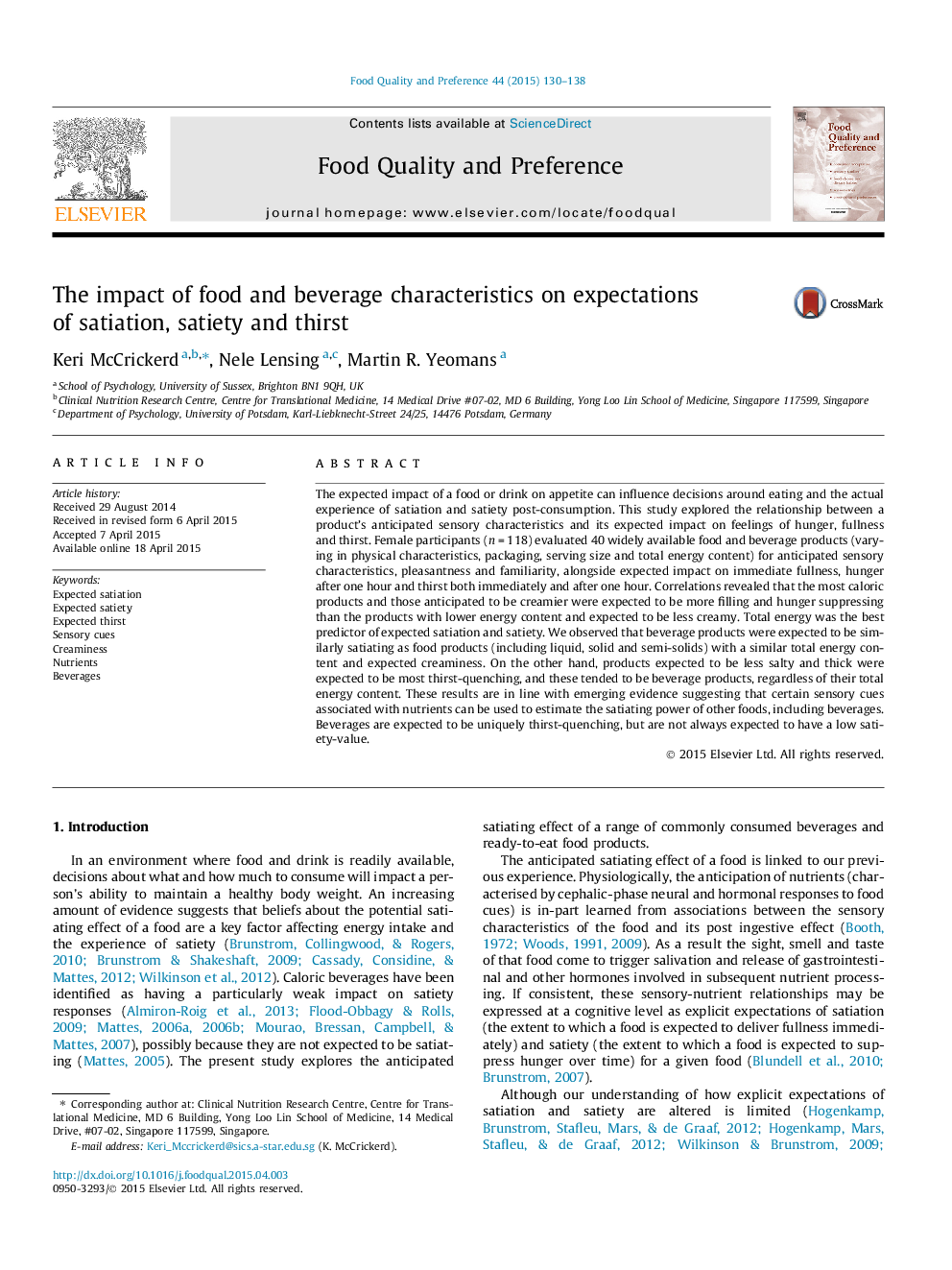| کد مقاله | کد نشریه | سال انتشار | مقاله انگلیسی | نسخه تمام متن |
|---|---|---|---|---|
| 6261358 | 1613153 | 2015 | 9 صفحه PDF | دانلود رایگان |
- Foods and beverages were evaluated for their expected impact on appetite.
- Products' anticipated to be creamier were expected to be more satiating.
- Total energy content was the best predictor of expected satiation and satiety.
- Expected thirst was best predicted by anticipated salty taste and thick texture.
- Beverages were expected to be thirst-quenching but also relatively satiating.
The expected impact of a food or drink on appetite can influence decisions around eating and the actual experience of satiation and satiety post-consumption. This study explored the relationship between a product's anticipated sensory characteristics and its expected impact on feelings of hunger, fullness and thirst. Female participants (n = 118) evaluated 40 widely available food and beverage products (varying in physical characteristics, packaging, serving size and total energy content) for anticipated sensory characteristics, pleasantness and familiarity, alongside expected impact on immediate fullness, hunger after one hour and thirst both immediately and after one hour. Correlations revealed that the most caloric products and those anticipated to be creamier were expected to be more filling and hunger suppressing than the products with lower energy content and expected to be less creamy. Total energy was the best predictor of expected satiation and satiety. We observed that beverage products were expected to be similarly satiating as food products (including liquid, solid and semi-solids) with a similar total energy content and expected creaminess. On the other hand, products expected to be less salty and thick were expected to be most thirst-quenching, and these tended to be beverage products, regardless of their total energy content. These results are in line with emerging evidence suggesting that certain sensory cues associated with nutrients can be used to estimate the satiating power of other foods, including beverages. Beverages are expected to be uniquely thirst-quenching, but are not always expected to have a low satiety-value.
Journal: Food Quality and Preference - Volume 44, September 2015, Pages 130-138
